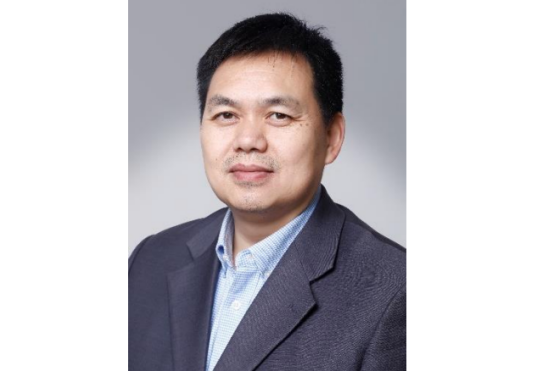Artificial intelligence accelerates industrial innovation and upgrading, how to deal with network infrastructure?

In today's digital economy, digital transformation has become the consensus of enterprises. With the application of AI, big data, cloud computing and other technologies, the construction of high-quality intelligent computing centers has become a key element to promote enterprise transformation. As the infrastructure of data centers, the network technology of data centers is also constantly evolving and developing, and with the popularization of 4 00G networks, optical fiber connections basically occupy the dominant position of data centers.
AI accelerates enterprise transformation, and it is imperative to upgrade the cabling of intelligent computing data centers
The increase in resource-intensive applications such as artificial intelligence (AI), machine learning (ML), big data, and others is driving the demand for higher capacity and lower latency networks. At the switch level, faster, higher-capacity application-specific integrated circuits (ASICs) make this possible. 400G has been rapidly popularized in intelligent computing centers, and 800G and 1.6 T have also become the development direction of future networks.
According to the June 2022 Dell'Oro report, 400G, 800G, and 1.6T will be the development trend of Ethernet. This means that Ethernet connectivity at 100G and below is rapidly iterating to 400G, 800G, and 1.6T. Lan Chen, general manager and vice president of CommScope Enterprise Networks Greater China, said that how is the design and architecture of AI data centers different from traditional data centers? What kind of solution does it need to support? What solutions do we need to reduce costs in order to improve operational efficiency? These are some of the problems and challenges brought to our data centers in the era of intelligent computing. That's where Propel comes in, which will help customers build data centers faster and better.

Lan Chen, General Manager and Vice President, Greater China, CommScope Enterprise Networks
CommScope has always focused on the next-generation fiber optic platform, enabling data centers to be more efficient and easier to upgrade to higher speeds, ultra-low loss optical performance, faster deployment, and more flexible design options.
Wu Jian, technical director of CommScope Enterprise Networks Greater China, said that AI requires a lot of computing power and fast connections. Because of the synergistic interaction between computing power and network connectivity, this has led to the rapid improvement of the network. The rapid iteration from 400G to 800G involves chips, lasers, transceivers, etc., as well as fiber connectivity. For this reason, the quality selection of optical fiber will become a key factor.

Jian Wu, Technical Director, CommScope Enterprise Networks Greater China
Wu Jian emphasized that with the increase in the number of GPUs used in data centers, we need to further increase the connection rate to meet the demand for computing power.
Launched the Propel platform to accelerate network modernization with an end-to-end solution
Based on current and future data center needs and trends, CommScope has introduced Propel, a new end-to-end high-speed modular fiber optic platform, to help data centers and enterprise customers accelerate network modernization around key criteria such as application-based building blocks, design flexibility and speed of deployment.
According to Wu Jian, Propel solutions have three core technical advantages:
- MPO16: MPO16 is based on multi-core parallel technology and is available in 8-core and 16-fiber solutions. Wu Jian said that an easy way to increase speed is to use parallel transmission, and with the advent of 400G and faster network technologies, the demand for MPO16 is gradually increasing. MPO16 means that there are 16 fibers in one connector, realizing the function of 8 transmitters and 8 receivers, so that it is easy to achieve 400G, 800G, 1.6T and other rate iterations.
- OM5: Based on multi-mode wideband technology, it allows one fiber to accommodate multiple wavelengths, enabling multi-lane (multi-wavelength) parallelism.
- VSFF ("Microduplex"): It enables the size of the connected device to be reduced to accommodate the high density needs of the future
- The APC end face and grinding surface of the optical fiber connector are mainly used to reduce the callback loss.
It is understood that the Propel module is available in four different interchangeable sizes, and the matching cable structure can easily expand the application through the system architecture. All components are ultra-low loss for superior performance and come with a dedicated QR code for performance tracking and online guidance.
Wu Jian emphasized that Propel can provide a platform for convergence and adapt to different needs. Although customer needs may gradually grow from 100G to 400G or even 800G, Propel is still able to meet their multiple needs and has strong convergence.
"CommScope has been serving a wide range of data center customers. We've listened to many of our data center customers, including the need for ease of maintenance and diversity support. As a result, the Propel platform is built for the future and at the same time responds to the needs of today's customers. Wu Jian said that on the Propel platform, CommScope provides more integrated cabling solutions, taking into account all technical elements. This is not just for the sake of existing technology, but also for the support of future technologies.
Focusing on the Chinese market, we will empower the development of green environmental protection and intelligent data centers
As a major energy consumer, the carbon emission of data centers has also become the focus of users' attention. Chen Lan said that the requirements of building a green data center, achieving carbon neutrality and carbon peak are very important for data center users. Focusing on the actual needs of the Chinese market, CommScope has built a large sales team and technical support team in China, and has made full use of the advantages of the technical support team to help in the early stageData center customers plan and design a data center that will last for up to 10 or even 15 to 20 years, while helping data center customers reduce energy consumption and protect their initial investment.
Wu Jian said that compared with foreign countries, due to the higher iteration frequency in China, the design life and resource life of data centers are relatively short, and they may only need to be replaced in three to five years. CommScope hopes that the data center itself needs to be forward-looking, able to iterate with the technology, from design, sustainability, design life and structureto build more high-quality data centers with a long design life cycle. He emphasized that China's development direction will be more focused on the development of green and intelligent data centers, so CommScope hopes that the new data center will be considered in the long term, including energy efficiency and high-speed network connectivity.
At the end of the interview, talking about CommScope's strategic priorities and plans for 2024, Wu Jian said that our strategic focus will be on the development of fiber optic technology. When it comes to copper, CommScope will continue to lead the way in delivering on its customer commitments and ensuring timely delivery. At the same time, we will also actively promote the solutions of the 6A standard.
"In terms of fiber optic technology, as the demand for data center customers continues to grow, data centers must adopt solutions that meet the needs of today and tomorrow, especially in recent years, with the development of IDC and the increasing leasing requirements of IDC tenants, service providers such as IDC have also realized that their tenants need more high-endEquipment and solutions. As a result, whether it is an enterprise-built data center or a data center built by an IDC vendor, the technical requirements are constantly increasing. This trend has given us great opportunities and we are actively preparing to participate in the bidding of a number of projects. Wu Jian said.